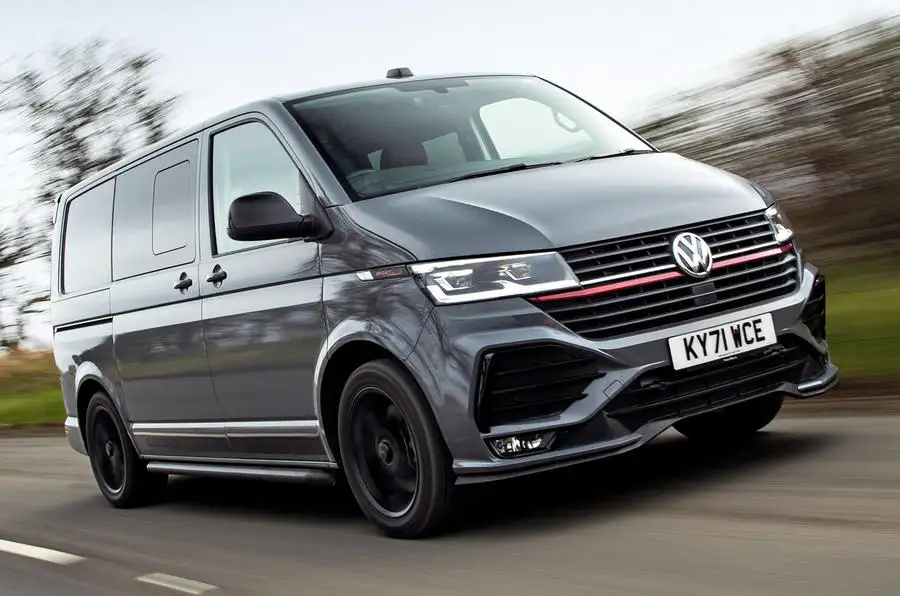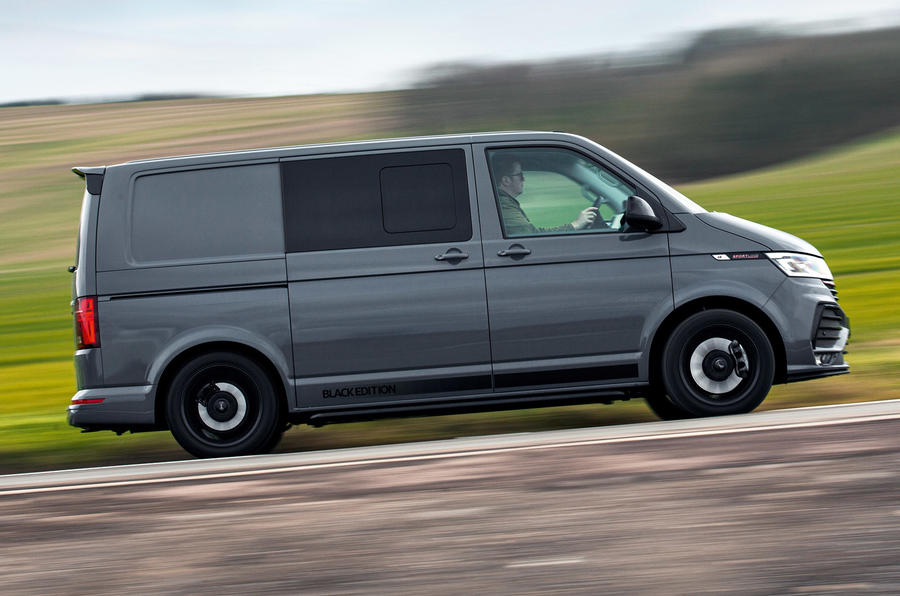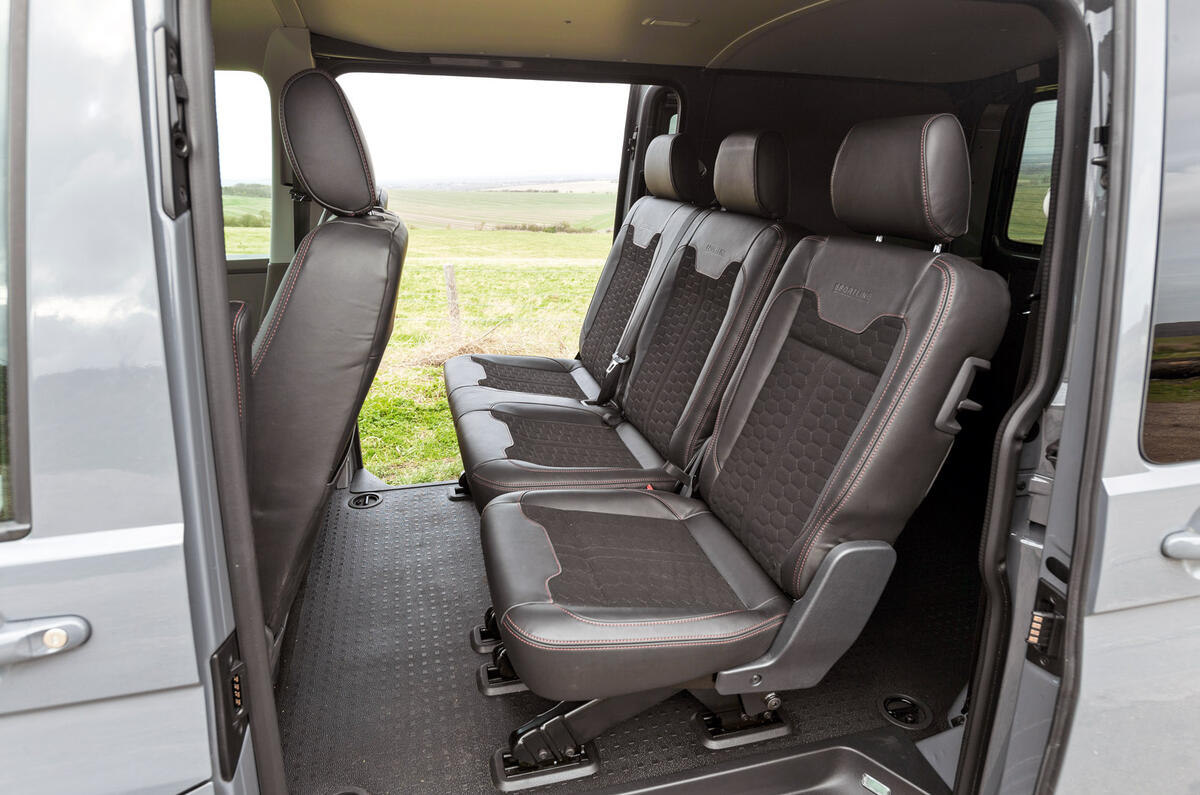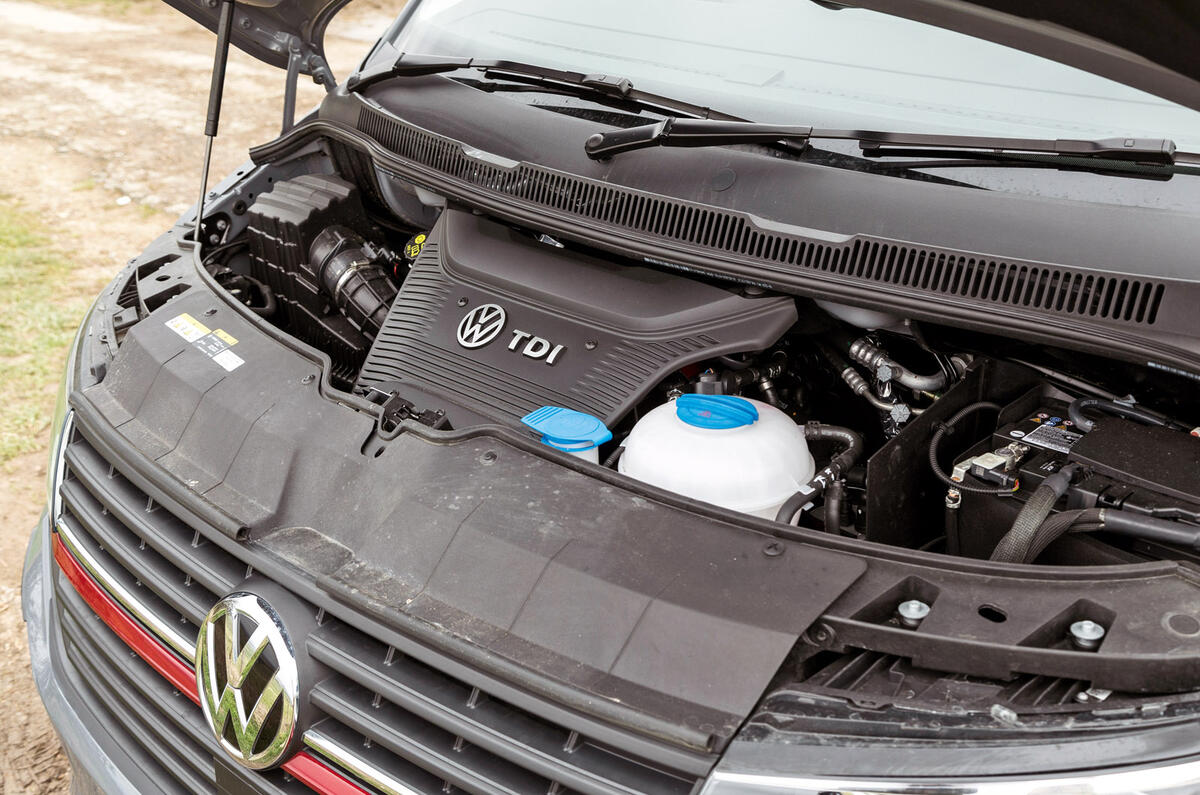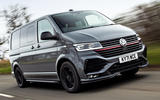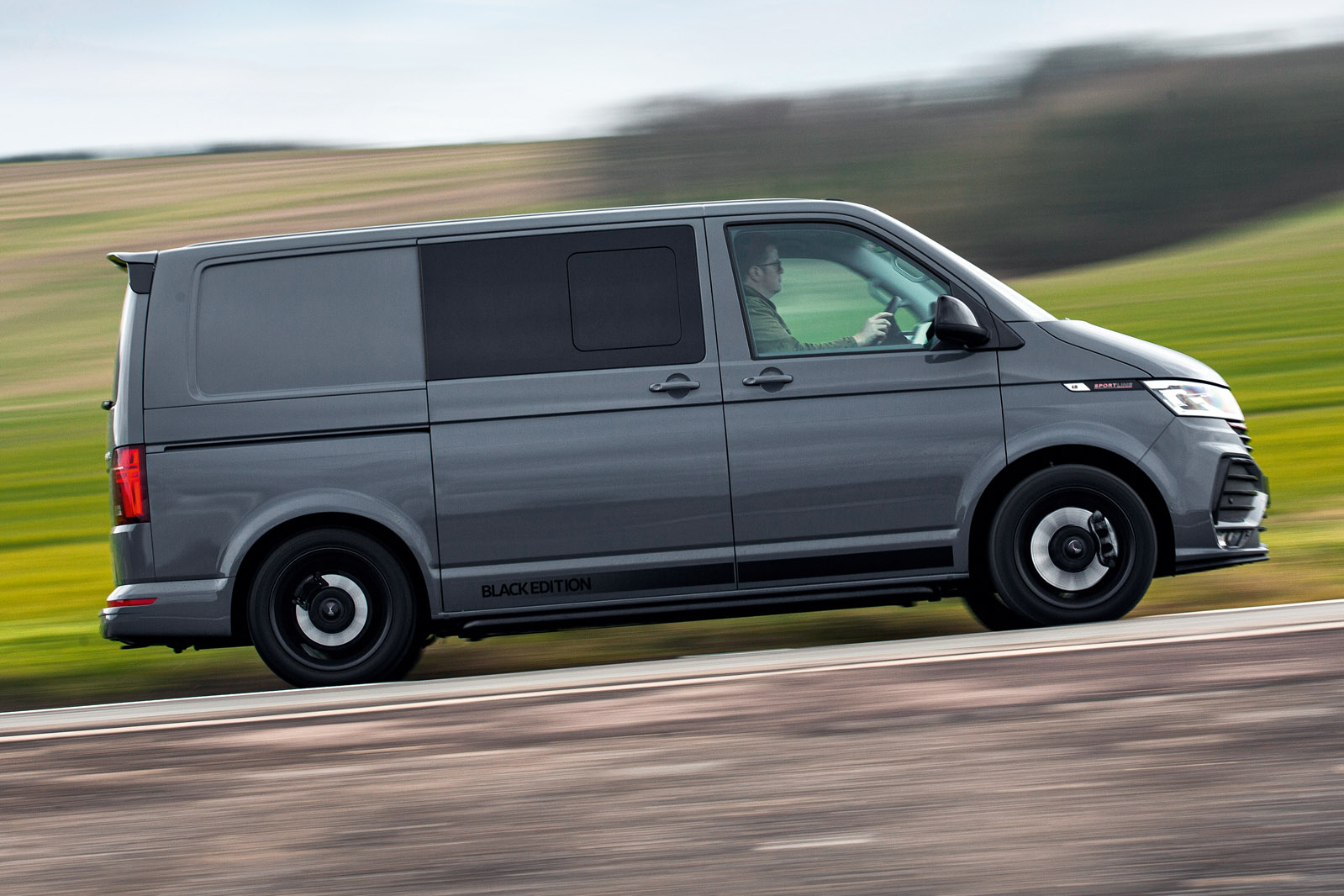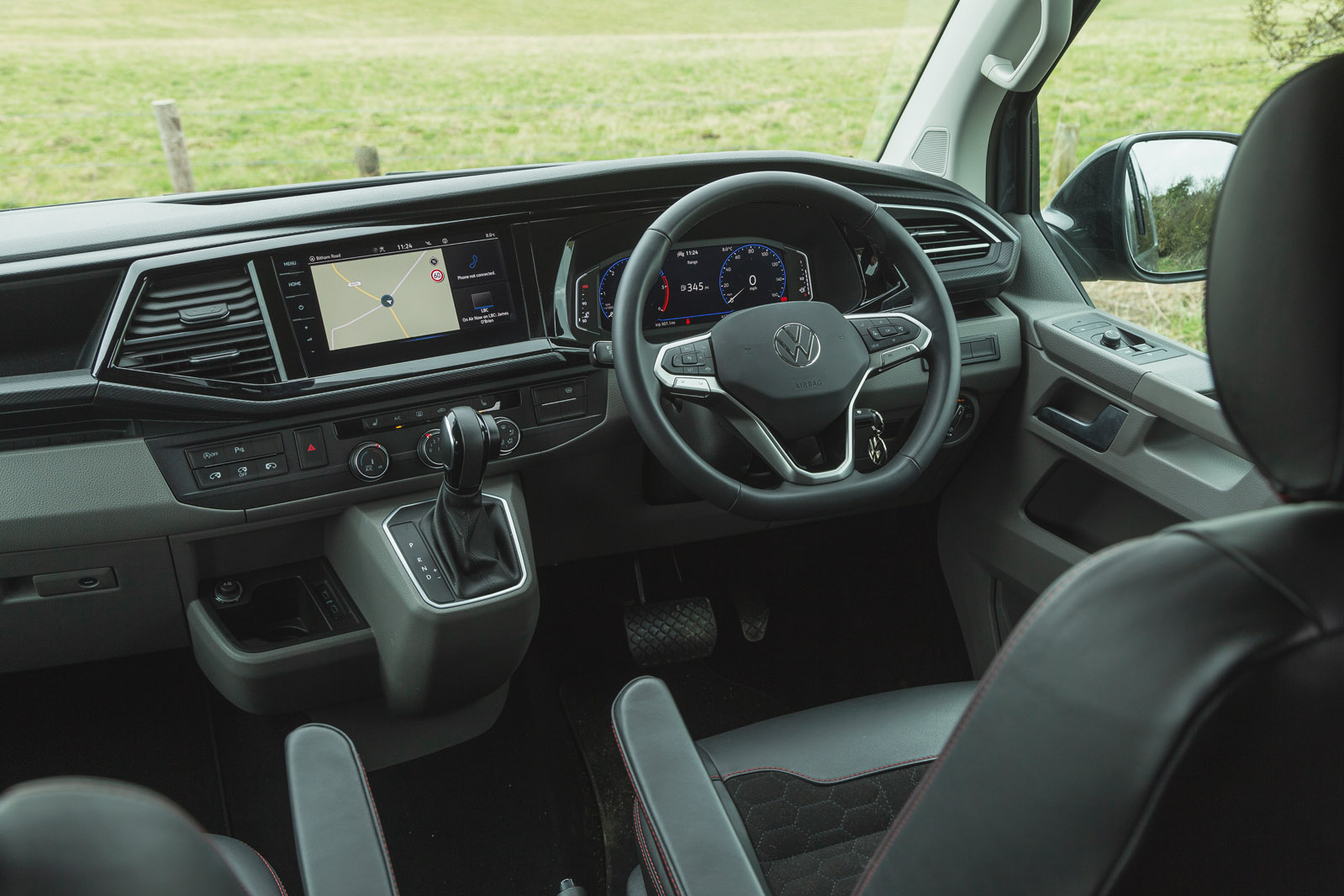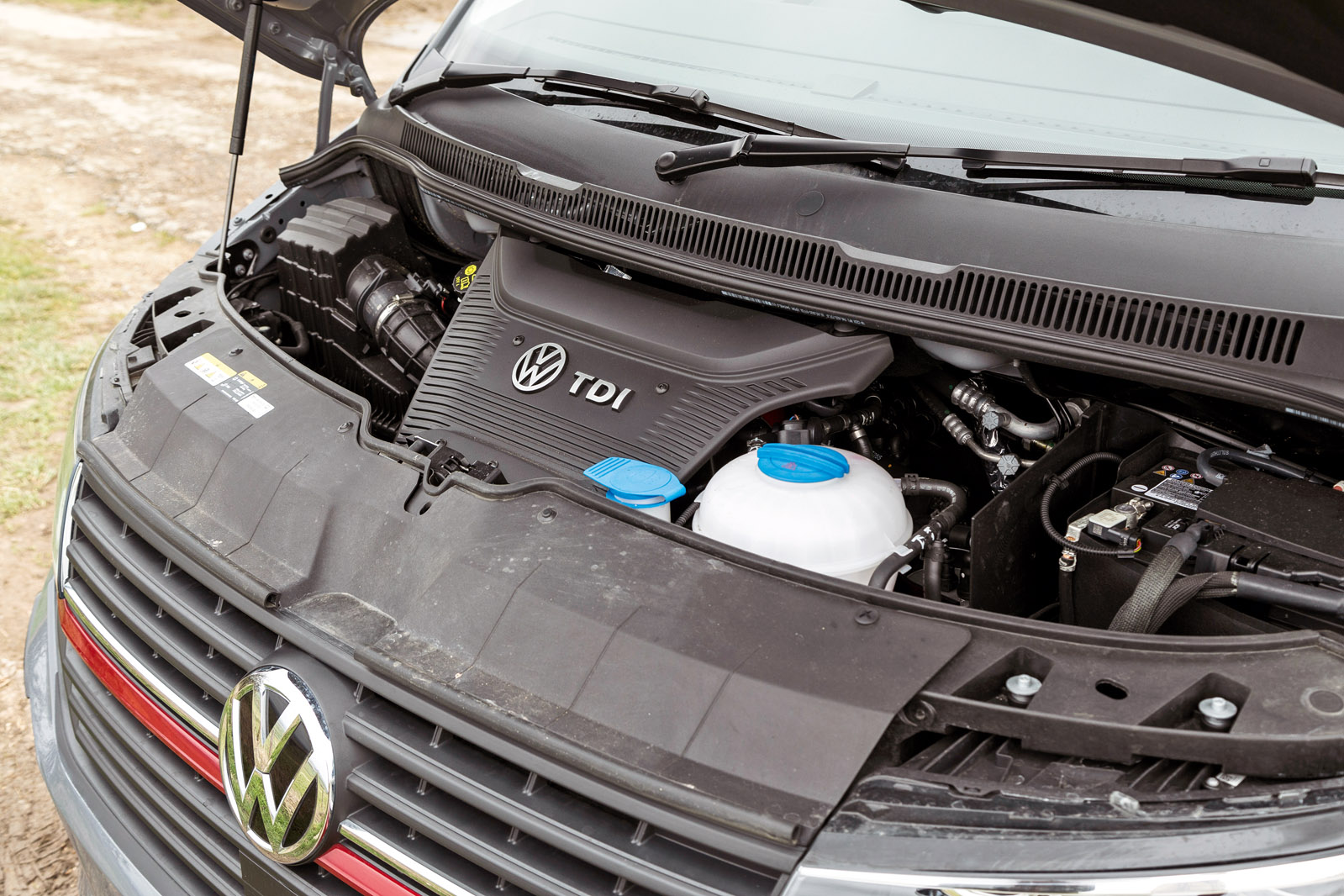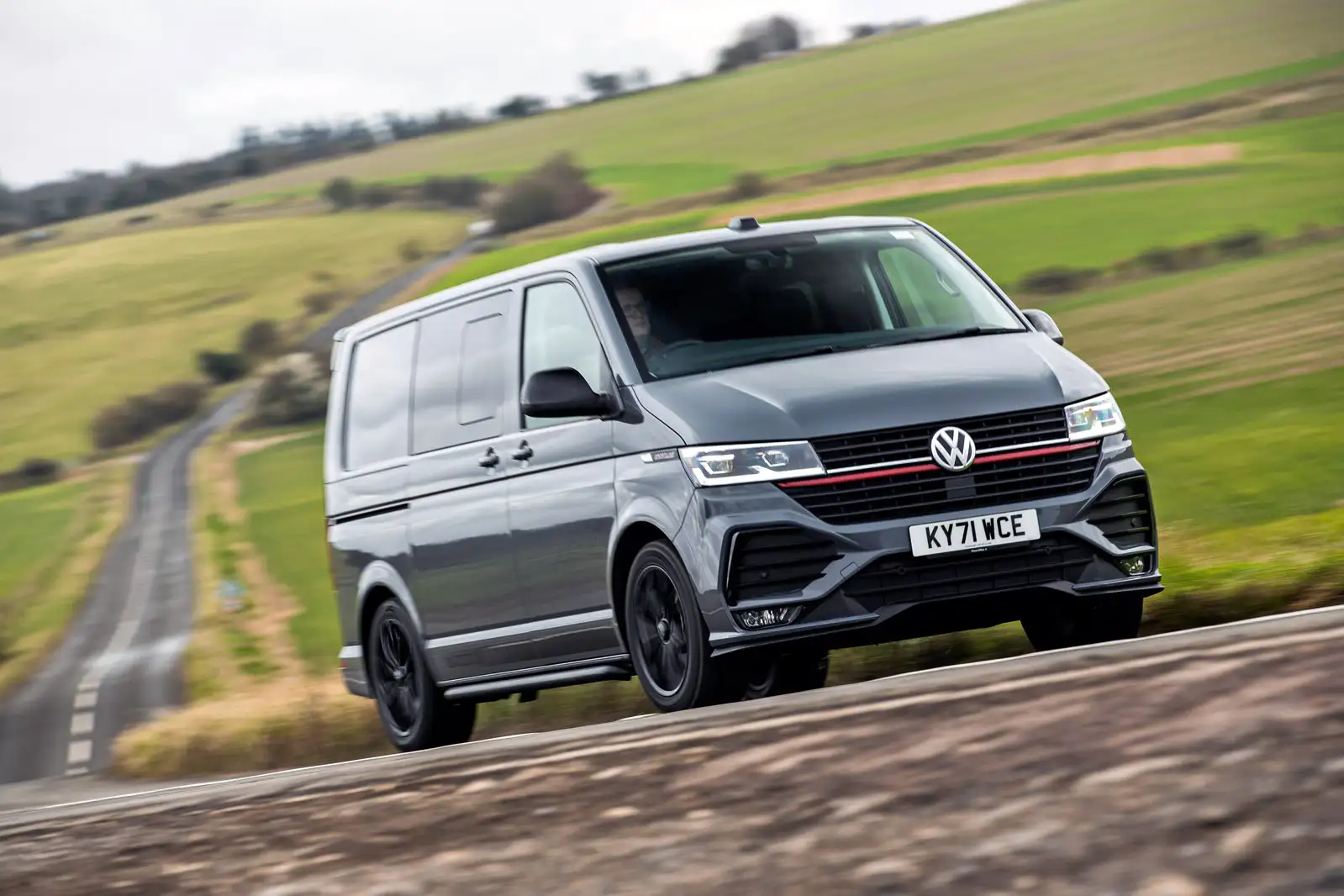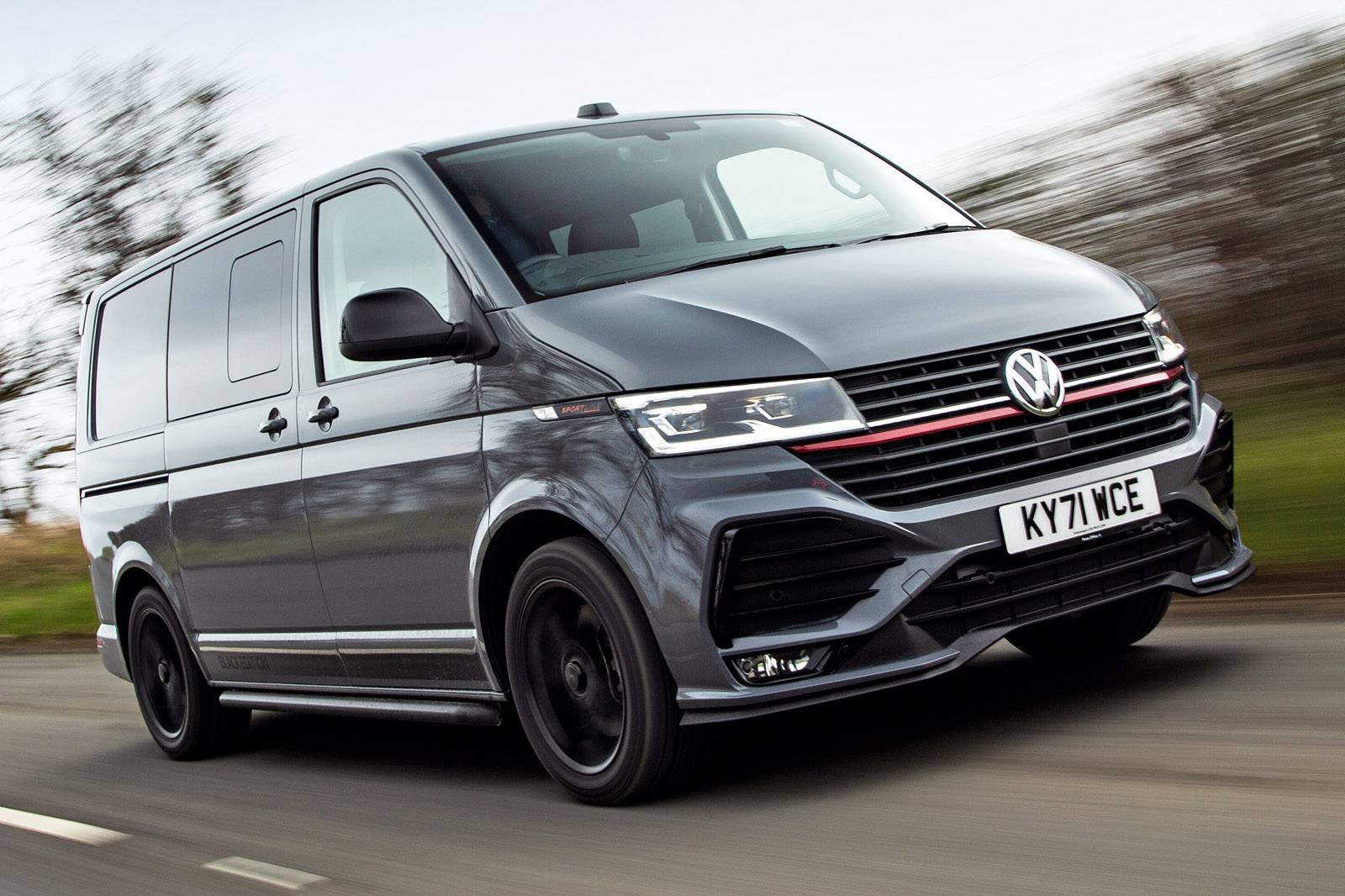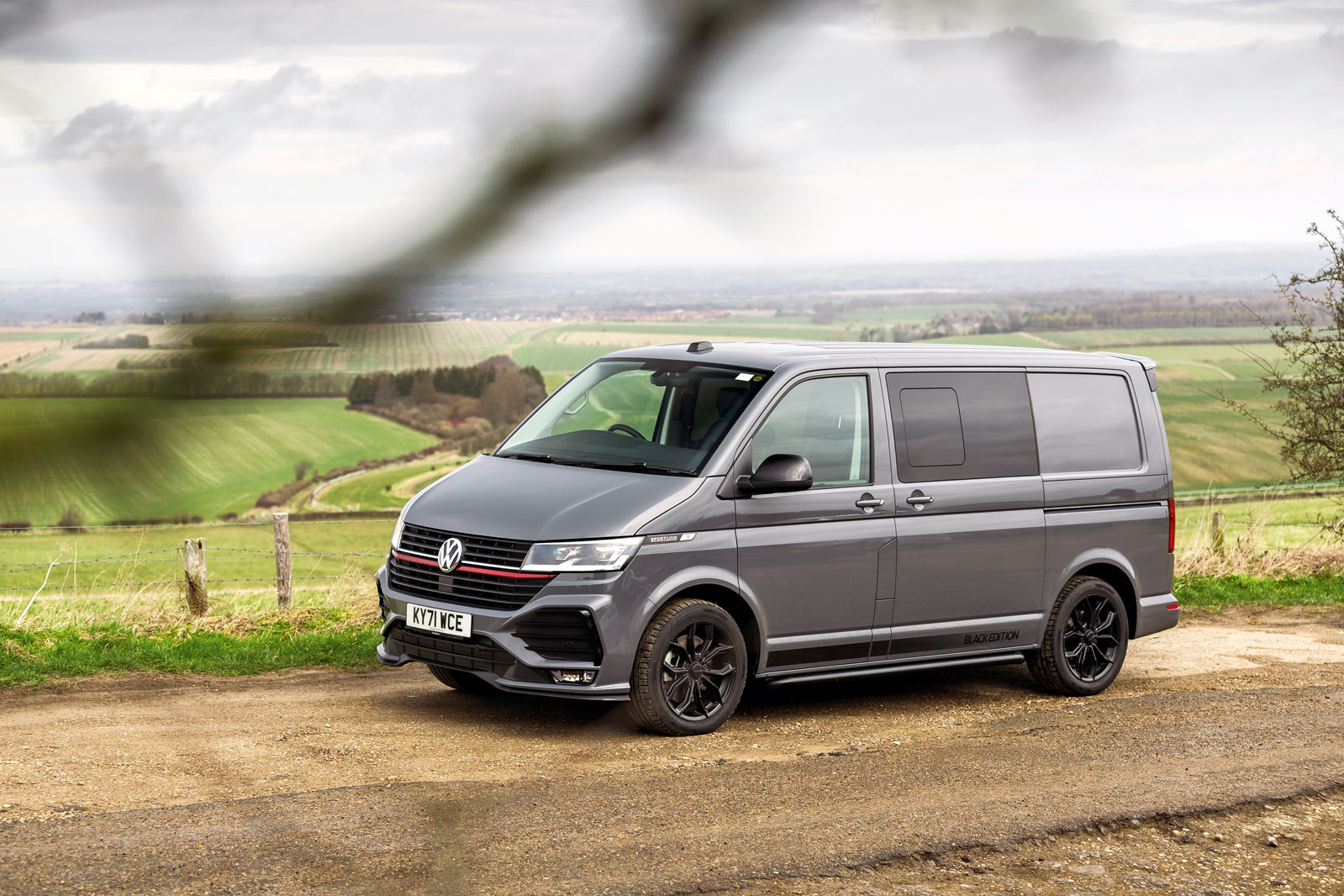The Transporter Sportline may have sporty aspirations, but it’s still a van – and as soon as you hear the slightly reverberant clang of the driver’s door as it closes behind you, you’ll know as much.
Once you’re in, you find seats that make only a gesture at sportiness (part-leather upholstery and red stitching, but short cushions and no side bolstering, and little or no lateral support). They offer great forward visibility, though, and are comfortable enough if you adopt the tradesman- favoured jacked-up driving position. There are also handles on the cab’s A-pillars for those who want to use a free hand to better secure their body weight during faster cornering than the seat design is given to do. Still, a van’s a van and, ergonomically at least, this one doesn’t do much differently from any other.
You get a leather steering wheel, digital instruments, an 8.0in touchscreen infotainment system, and a few metallised highlights and bits of slightly showy trim for your money. The Transporter’s dashboard is made uniformly of hard, scratch-resistant mouldings, while the cab is carpeted and well furnished for storage cubbies and cupholders, on the upper and lower dashboard and in the door consoles.
In the back, two glazed, power-sliding rear passenger doors come as standard. The rear seats (Kombi crew vans have two rows) divide into a two-seater unit on the offside and an individual chair on the nearside of the vehicle. Both fold forwards, and the latter also leans forward to allow access to the cargo area through the nearside side door.
Both seat units can also be removed entirely (although they’re heavy and awkward), opening up a vast loading area that we measured at just over 2.5 metres in total length – and that’s in the short-wheelbase version. Even with the rear seats in place, there’s room to thread longer items along the floor and underneath the back seat cushions if you need to.
The loading area in five-seat mode is more than a metre and a half long anyway, as well as more than a metre and a half wide at its widest, and approaching a metre and a half tall from floor to ceiling. That’s much more room than you would get in any SUV or big people carrier, and there are lashing eyes to secure heavier loads.
Volksawagen Transporter infotainment and sat-nav
The Transporter still uses the old 8.0in Discover Media touchscreen infotainment system of Volkswagen’s last-generation passenger car models. That is no bad thing, given our reservations about usability in the latest MIB II set-ups.
It doesn’t lack for functionality, offering wireless smartphone mirroring, wired device charging by USB-C ports, 32GB of on-board media storage and connected services, with online media streaming (for a year, and then via subscription) courtesy of VW’s We Connect Plus service.
It’s somewhat of a shame to find no physical volume knob here, but usability is otherwise good. Navigation destinations are easy to program via fingertip input; a little bit less so, perhaps, by voice command – but the system typically worked at the second or third attempt for us.
The quality of the audio system is respectable but not up to the standards of a similarly priced premium one in a passenger car. The ambient noise level in the back is likely to make rear-seat passengers prefer headphones, and their own entertainment.


